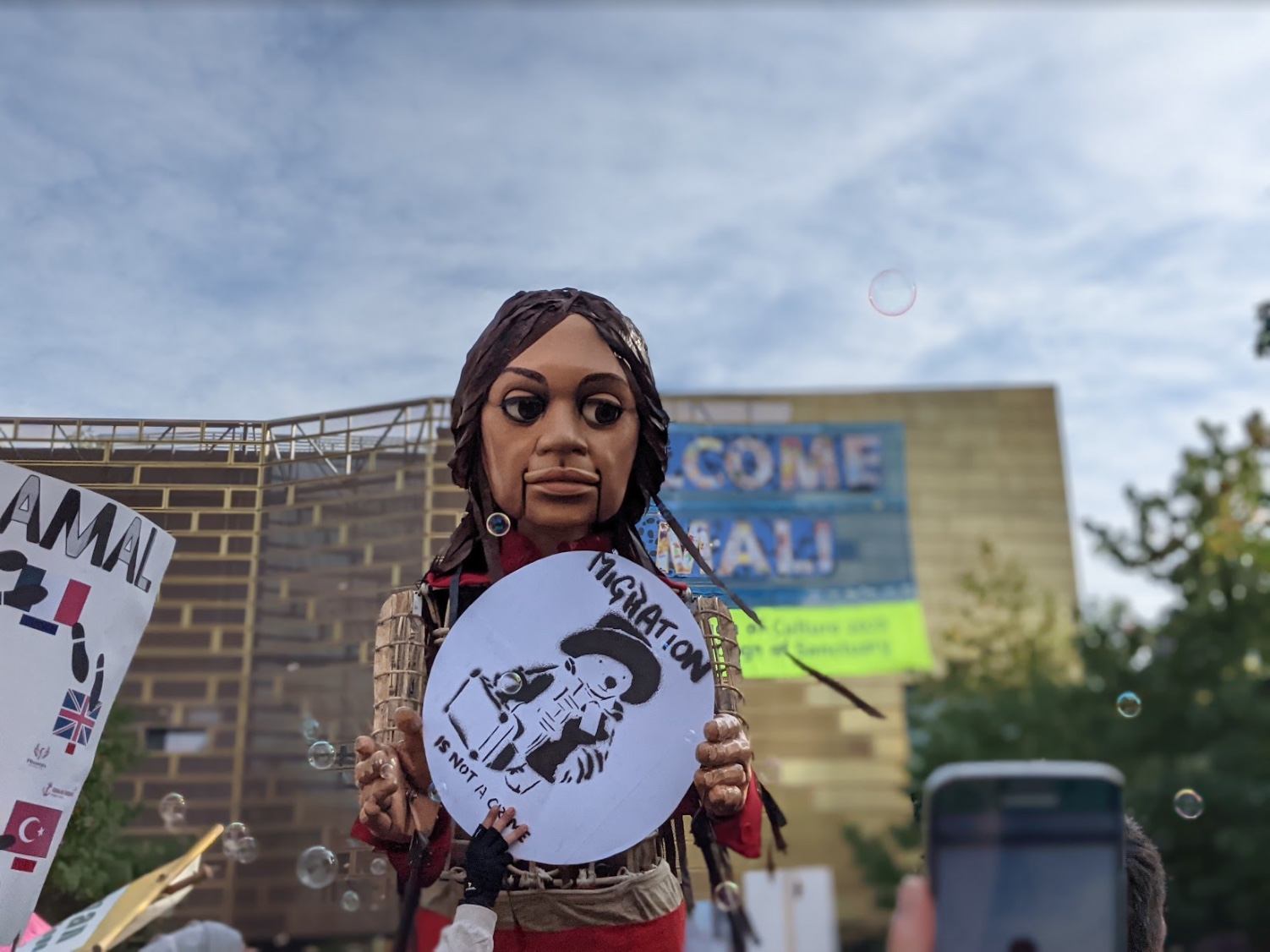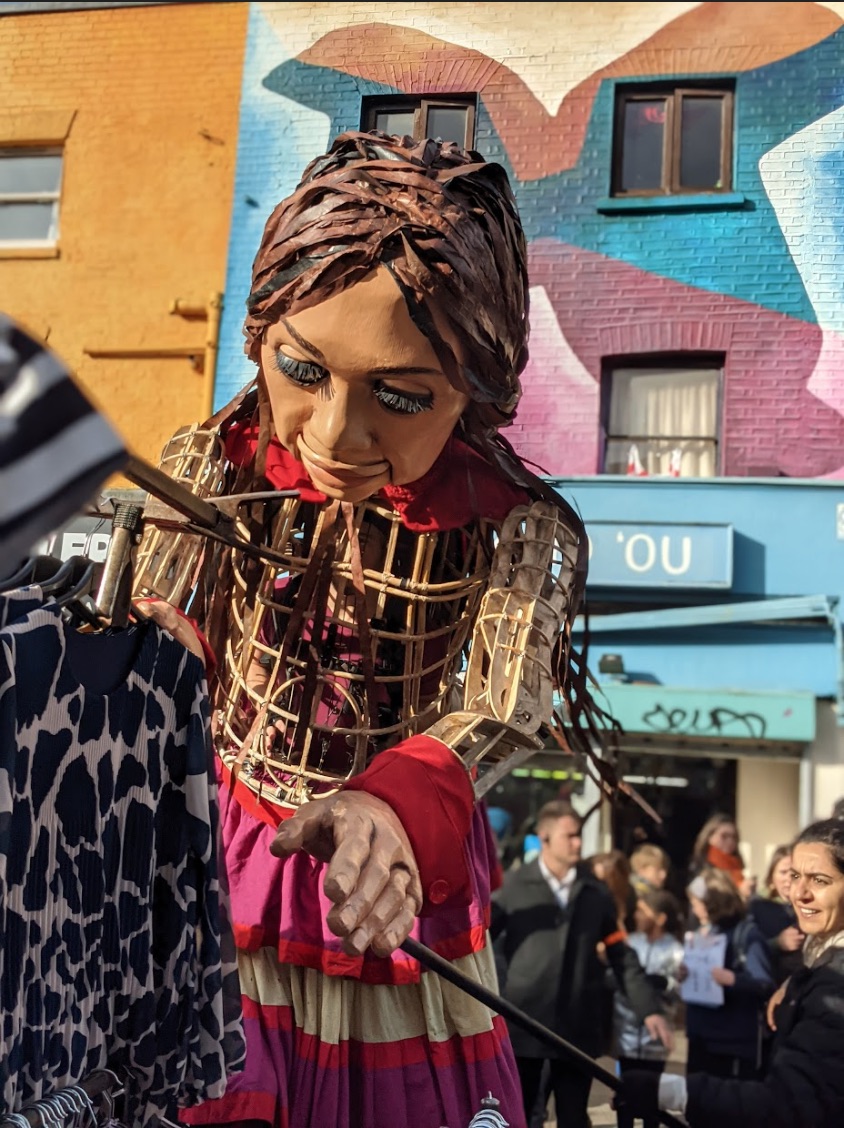The People’s Friend – Heart of the Nation (01/01/2021)
A feature on our Heart of the Nation: Migration and the Making of the NHS exhibition in the January edition of The People’s Friend magazine.
A feature on our Heart of the Nation: Migration and the Making of the NHS exhibition in the January edition of The People’s Friend magazine.
Robyn Kasozi, our Head of Public Engagement, was a guest on the Quarantini Podcast, speaking about Heart of the Nation: Migration and the Making of the NHS.
The Voice previews our Departures exhibition, exploring 400 years of emigration from Britain.


The Migration Museum was thrilled to be part of the welcome for Little Amal, a giant puppet of a Syrian refugee, to Lewisham on Friday 22 October 2021.
The Walk, an international arts festival meets endurance event, saw Little Amal, a 3.5 metre-tall puppet whose name means ‘hope’ in Arabic, walk across the European continent to shine a light on the stories of millions of young refugees. She travelled through 8 countries and was welcomed by hundreds of cultural events in cities, towns and villages all along her route.
As the UK’s first Borough of Sanctuary and the London Borough of Culture in 2022, Lewisham was a fitting first stop for Little Amal on the London leg of her journey.
The Migration Museum, along with students from 10 local schools, and local partners including I Am Lewisham, The Albany, Refugee Café, Deptford X and Lewisham Refugee and Migrant Network, gave her a huge welcome.
Little Amal toured the market on Deptford High Street before proceeding into Giffin Square, where we unveiled a welcome banner which we’d worked with St Mary’s years 5 & 6 students to make, and gave her a giant sticker as a gift.


Little Amal’s journey finished in Manchester on Wednesday 3 November.